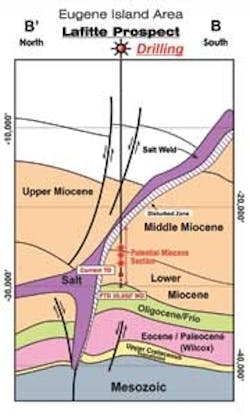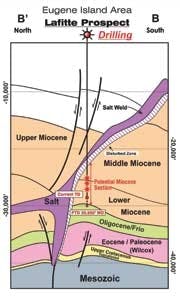Eldon Ball • Houston
It's that time of year again. Sleigh bells ring and we're listening and in the lane, snow is glistening, and we're ready for another annual forecast of oil prices for 2012, and all that implies.
This year, after consulting with the gnomes of Zurich, the sheiks of Dubai, and the entrails of a number of environmentally un-endangered birds, we have divined a 2012 average price that we believe will stand the tests of logic and probability.
But first, let's examine the rationale.
Remember that price is a function of supply and demand, so that whatever increases supply – demand being static – decreases price, and vice versa. Seldom does either price or demand remain static, so we are challenged with anticipating the size, direction, and timing of their movements. Here are some currently occurring trends that can move the market:
Bullish indicators
At press time, WTI sweet crude prices are creeping past $100/bbl on the futures market and Brent crude is weighing in at just over $111/bbl. This is a strong trend, although of indefinite duration. Recent economic reports in the United States show that consumer spending increased for electronics, appliances, hardware, building supplies and at grocery stores, restaurants and health care stores, suggesting a healthier economy and growing energy demand. The economies of Asia, specifically India and China, continue to expand, increasing energy demand.
In addition, the strength of the US dollar continues to fall. Since oil is priced in dollars, the less they are worth, the more it takes to buy something, including a barrel of oil. Although the US dollar is currently trading slightly above its 200-day moving average, it has been in a steady decline since May of this year. Current fiscal policy by the US administration and the Federal Reserve won't change that trend.
Bearish indicators
Reports from Libya maintain that all factions, still red in tooth and claw from violent disagreements, can at least agree that it behooves them to sell oil, and that hence a supply of 1.6 MMb/d will return to the market by June of next year. This increased supply will put downward pressure on prices.
As the long-running drama of European government debt continues to unfold, we find that now even France, the Netherlands, Finland, Spain, Belgium, and Austria are at risk of rising interest rates and in danger of joining Greece and Italy in approaching unsustainable debt service costs. If that happens, Europe could see a ripple effect of defaults or write-downs that would result in widespread recession. Analysts say that oil traders have priced in the potential for a slowdown in the euro zone. This editor would beg to differ.
New reserves from the shale oil and gas plays in the US are a double-edged sword. While the new sources of supply will reduce American reliance on imports – helping the US balance of payments and relieving the impact of higher energy prices on the US economy – they will have a downward influence on prices (something already occurring for gas). In fact, we expect gas to gradually replace oil for some energy uses, bringing further downward pressure on crude prices. There is little doubt that the shale boom in the US is significant. Anadarko Petroleum, for example, says its horizontal Niobrara program in the Wattenberg field in Colorado generates returns competitive with its best projects. Anadarko says reserve potential in Wattenberg alone is 500 MM to 1.5 Bboe. It is the tip of a very large iceberg.
OPEC has traditionally held the trump hand on oil prices, able to increase or reduce supply when price gets out of hand in one direction or the other. It has been the strategy of oil-consuming nations for years to find sources outside the OPEC cartel and therefore more responsive to market forces. Witness China, which, steeped in the Confucian wisdom of peering far into the future and planning accordingly, has taken E&P and purchasing positions throughout the globe in such oil-rich environs as Brazil, Venezuela, most of West Africa, Australia, and Canada. Leaving no stone unturned, CNOOC is even now exploring off Cuba. Even so, OPEC still controls an estimated 70% of supply, clearly enough to control prices if all the members follow policy. It is OPEC's policy to not allow oil to price itself out of the market.
Iran: The wildcard
Even the United Nations now admits that Iran is working to develop a nuclear strike capability, and even the most gullible of world leaders doubts that once it reaches that capability, Iran will use it. If that happens, or if Israel mounts a preemptive strike, as has been speculated, all other calculations are meaningless.
For the first half of 2012, the bullish trends outweigh the bearish, and we see an average first half price of $98/bbl, with short-term prices whipsawing as much as 20% on either side of that level. It will take until May for the European situation to resolve into something the market can assimilate, after which price could fall. Remember that in late April, crude oil futures contracts were trading at $115, and as recently as early October they were at $75.
It's not an exact science. And we're not ready to make a call on the second half of 2012.
McMoRan hits pay dirt
McMoRan Exploration Co. has encountered new hydrocarbons at its Lafitte ultra-deep prospect, Eugene Island Block 223, in 140 ft (42 m) of water. The well has been drilled to a TVD of 29,756 ft (9,070 m) and has been logged with wireline logs to 29,740 ft (9,064 m). The wireline log results indicated 56 net ft (17 m) of hydrocarbon-bearing sand over a 58-ft (17.6 m) gross interval in the Cris-R section of the Lower Miocene with good porosity, the company said. Flow testing will be required to confirm the ultimate hydrocarbon flow rates from this zone, which was full to base. McMoRan controls approximately 15,000 gross acres in the immediate area of Lafitte.
Lafitte is McMoRan's third ultra-deep prospect to encounter Miocene age sands below the salt weld on the GoM Shelf.
The new Cris-R sand interval combined with the previously encountered 115 ft (35 m) of potential net pay (250 gross ft (76 m)) brings the total possible productive net sands to 171 ft (52.4 m) in the Lafitte well. These results enhance the potential of McMoRan's other acreage in the Lafitte strategic area, including its Barataria and Captain Blood ultra-deep prospects. Barataria (10,000 gross acres) is located west-southwest of Lafitte and Captain Blood (10,000 gross acres) is located immediately south of Lafitte.
McMoRan plans to apply for a permit to deepen the Lafitte well to a proposed TD of 32,000 ft to evaluate deeper objectives.
Offshore Articles Archives
View Oil and Gas Articles on PennEnergy.com




